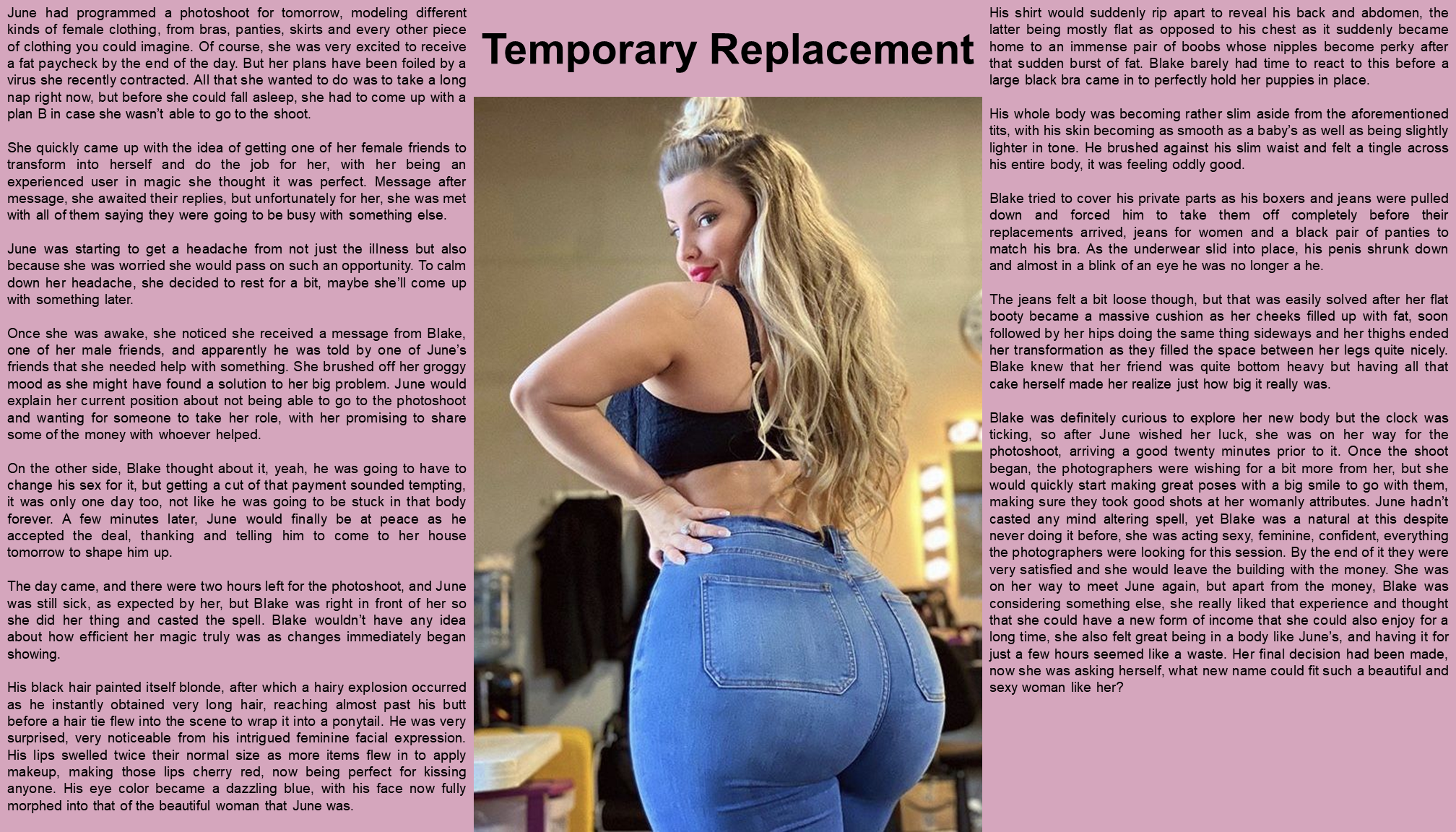In today’s fast-paced work environment, the need for flexibility and adaptability has never been more important. Temporary replacements are often essential in ensuring that business operations run smoothly when an employee is unavailable. This article explores the concept of "temporary replacement 2," which refers to the strategies and processes involved in finding the right temporary talent to fill in for an absent employee. Understanding how to efficiently manage these transitions can significantly impact a company's productivity and morale.
With various factors influencing the decision to hire a temporary replacement, businesses must carefully evaluate their options. The concept goes beyond merely filling a position; it involves understanding the role's requirements, the company's culture, and the dynamics of the team. Furthermore, the effectiveness of a temporary replacement can directly affect the remaining staff and the overall success of projects. Addressing these points will help organizations choose the right temporary solution that aligns with their needs.
As we delve into the intricacies of temporary replacement 2, we will examine several key aspects, including the benefits of temporary hires, how to identify the right candidates, and what considerations should be made during the selection process. By the end of this article, you will have a comprehensive understanding of how to navigate the challenges posed by employee absences and ensure that your team continues to thrive.
Read also:Happy Hippo The Cheerful Creature Of The Animal Kingdom
What is Temporary Replacement 2?
Temporary replacement 2 refers to the process of hiring a temporary employee to fill in for someone who is absent due to various reasons such as illness, maternity leave, or vacation. This approach allows businesses to maintain productivity and avoid disruptions in their operations. Companies can utilize several strategies to effectively implement temporary replacements, ensuring that they find the right fit for the role and the organization's culture.
Why is Temporary Replacement 2 Important for Businesses?
Temporary replacements are crucial for several reasons:
- Continuity of Operations: Ensures that work continues without significant delays.
- Cost-effectiveness: Reduces the financial burden of hiring full-time employees for short-term needs.
- Flexibility: Allows businesses to scale their workforce up or down based on demand.
- Access to Specialized Skills: Provides access to talents that may not be available in-house.
What Are the Challenges of Temporary Replacement 2?
While temporary replacements can be beneficial, they also come with challenges, including:
- Onboarding Time: Temporary employees may require time to acclimate to the company's processes and culture.
- Team Dynamics: Integrating a temporary worker into an established team can be difficult.
- Quality Control: Ensuring that the temporary hire meets the company’s standards can be challenging.
How to Choose the Right Temporary Replacement 2?
Choosing the right temporary replacement involves a systematic approach. Here are some steps to consider:
- Define the Role Clearly: Understand the requirements and responsibilities of the position that needs to be filled.
- Assess Cultural Fit: Consider how the temporary employee will fit into the existing team and company culture.
- Utilize Reliable Sources: Work with reputable staffing agencies or platforms specializing in temporary hires.
- Conduct Thorough Interviews: Screen candidates carefully to ensure they possess the necessary skills and experience.
What Skills Should a Temporary Replacement 2 Have?
When evaluating candidates for a temporary position, consider the following skills:
- Adaptability: The ability to quickly adjust to new environments and tasks.
- Communication: Strong verbal and written communication skills to facilitate collaboration.
- Time Management: The capability to manage tasks efficiently, especially under tight deadlines.
- Technical Proficiency: Familiarity with the tools and software commonly used in the industry.
What Are the Best Practices for Onboarding Temporary Replacement 2?
To ensure a smooth transition for temporary employees, consider the following best practices:
Read also:Unveiling The Educational Brilliance Of Shady Side Academy
- Provide Comprehensive Training: Offer clear instructions and resources to help temporary hires succeed.
- Assign a Mentor: Pair the temporary employee with a team member who can guide them through the initial phase.
- Set Clear Expectations: Communicate the goals and objectives for the temporary role.
- Regular Check-ins: Schedule frequent meetings to address any concerns and provide feedback.
How Do You Evaluate the Success of Temporary Replacement 2?
Evaluating the success of a temporary replacement can be done through various metrics, including:
- Performance Reviews: Assess the quality of work and output compared to expectations.
- Feedback from Team Members: Gather input from colleagues regarding collaboration and integration.
- Impact on Overall Productivity: Measure whether the temporary hire helped maintain or enhance productivity levels.
What Next After a Temporary Replacement 2?
Once the temporary replacement has completed their assignment, organizations should consider the following steps:
- Conduct a Debrief: Discuss what went well and areas for improvement regarding the temporary hire process.
- Evaluate Long-term Needs: Assess whether there is a need for a permanent hire based on the temporary employee's performance.
- Maintain Relationships: Stay in touch with successful temporary employees for future opportunities.
Conclusion: The Future of Temporary Replacement 2
In conclusion, the concept of temporary replacement 2 plays a vital role in the modern workplace. By understanding the intricacies involved in hiring temporary talent, businesses can ensure that they remain agile and effective in meeting their goals. Emphasizing the importance of adaptability, communication, and proper evaluation will allow organizations to navigate the challenges of employee absences successfully. As the workforce continues to evolve, mastering the art of temporary replacements will be a critical component of any successful business strategy.


